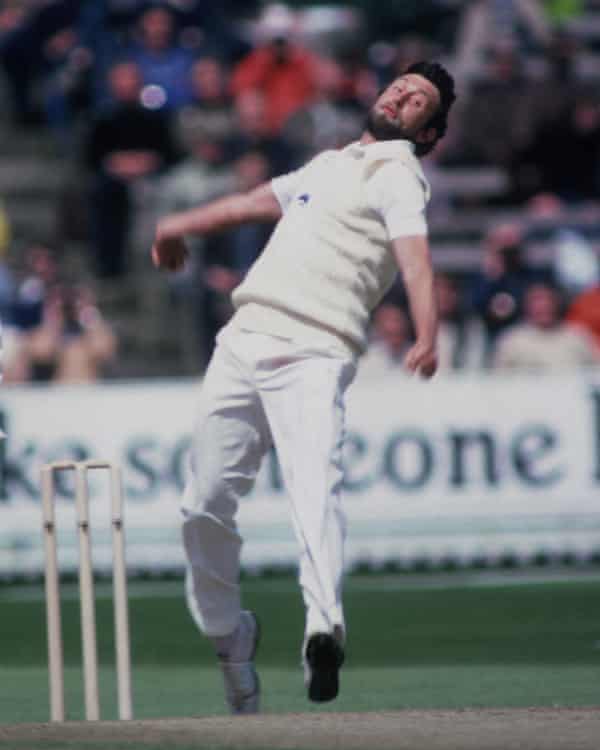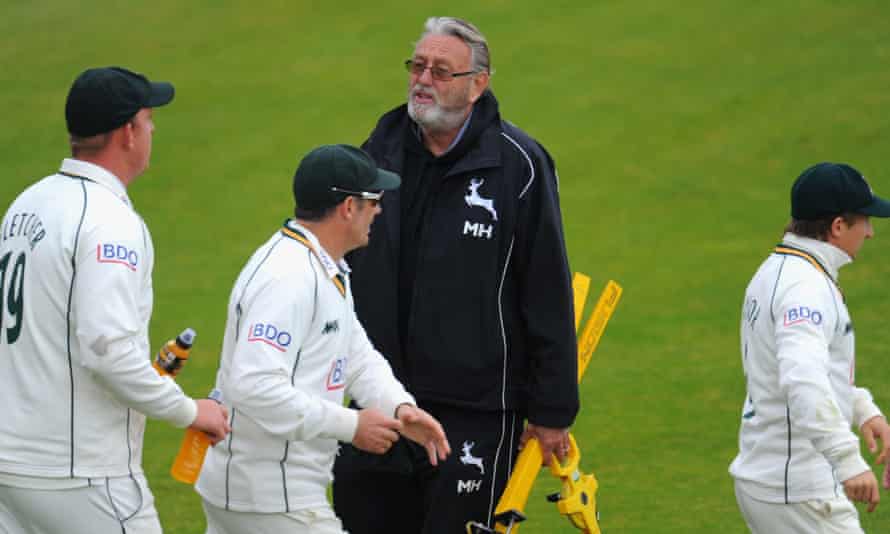[ad_1]
The cricketer Mike Hendrick, who has died aged 72 of bowel cancer, was a supremely accurate and dependable right-arm fast medium bowler who played 30 times for England in the 1970s and early 80s.
Possessed of a rhythmic, perfectly sideways-on action, at times he almost appeared to bowl too well for his own good, seaming the ball away from the righthander so deliciously and on such a consistently tricky line that it was difficult even to lay a bat on him.
As a consequence, he often found himself delivering excellent spells for England that yielded just a smattering, rather than a handful, of victims, and he holds the dubious honour of being the player to have taken the most Test wickets – 87 at an average of 25.83 – without ever having achieved a haul of five in an innings.
At county level, chiefly for Derbyshire but later at Nottinghamshire, Hendrick was often able to produce more devastating figures. But still the emphasis was on a nagging line and length, with a parsimonious first-class bowling average of 20.50.
At 6ft 3in he was masterful on green English wickets but could also produce the goods abroad, as he proved in the 1978-79 Ashes series in Australia, where he took 19 wickets at an average of 15 as England won the series 5-1. Nonetheless, his tendency to bowl impressive, rather than explosive, spells meant he was often in and out of the Test side.

Born in Darley Dale, north of Matlock in Derbyshire, Hendrick moved at an early age to Darlington in County Durham, where his father, Bill, a tax inspector, was a bowler at Darlington cricket club and introduced his son to the game at the age of 10. When Mike was 15 the family moved to Leicester and he took on a job at the electricity board, which he quit – rather precipitately – in his late teens when he began to pick up regular games with Leicestershire’s second XI. The wisdom of his resignation, and banking on winning a full-time contract as a cricketer, looked doubtful when Leicestershire’s interest began to wane, but fortunately he came to the attention of Derbyshire, who took him on to their books in 1968.
Hendrick made his first-team debut in 1969 but was troubled with injury for two years before a winter working as a labourer helped to improve his conditioning. Making a name for himself with a consistently good season in 1972, the following year he was called up for England’s 1973-74 tour of the West Indies, although he was judged to be too inexperienced to play in a Test.
His first England cap came against India at Manchester in 1974; in all he played five Tests that summer, which included three matches against Pakistan. In Australia the following winter he picked up a hamstring injury in the third Test that kept him out of the rest of the series, but he was back against New Zealand at the end of the tour and played in two Tests against West Indies at home in 1976.
Although by that point he had made a good impression on the international scene, it did not help Hendrick’s cause that his home county was generally playing poor cricket, and by his own estimation he was being picked for England “despite playing for Derbyshire”. His marketability and form improved, however, with the arrival in 1976 of a new Derbyshire captain, Eddie Barlow, who not only turned around the county’s fortunes but improved Hendrick’s confidence, fitness and expectations.
In 1977 Hendrick took 67 wickets at an average of 15.94 in first class matches, including 14 at 20.71 in three home Ashes Tests, after which Wisden named him one of its 1978 cricketers of the year. Then followed his highly successful 1978-79 campaign in Australia and a fine performance in one-day cricket across five games of the 1979 World Cup finals. There he was the best bowler, with 10 wickets at an average of 14.90, and he appeared in the final at Lord’s against West Indies as England succumbed to the brilliance of Viv Richards.

Despite his inability to get more than four wickets in a Test innings, in 1980 Hendrick became the first England player to take five in a one-day international. On the domestic front more one-day joy followed in the 1981 NatWest Trophy final, which he won with Derbyshire. By then, however, his relationship with a new Derbyshire captain, Barry Wood, had soured, and he moved to Nottinghamshire for a three-season swansong.
Hendrick’s last two Tests came in the dramatic 1981 Ashes series, during which he was initially picked for the famous Headingley Test ahead of Bob Willis but was left out when Willis persuaded the selectors he was fit.
Shortly afterwards, Hendrick signed up for the 1981-82 England rebel tour to South Africa, which led to a three-year ban from the international game and ended his chances of playing for England again. He retired from first class cricket in 1984, becoming cricket manager at Nottinghamshire.
The bulk of his later work was as a successful bowling coach, including for Ireland, Scotland, Derbyshire, Zimbabwe and Nottinghamshire. In between he spent periods as an analyst for Test Match Special and local BBC radio, and was a popular raconteur on the after-dinner speaking circuit.
He married Kathy in 1976 and they had three children, Christopher, Jill and Nick. The marriage ended in divorce. He is survived by his partner, Maggie, and his children.
[ad_2]
Source link